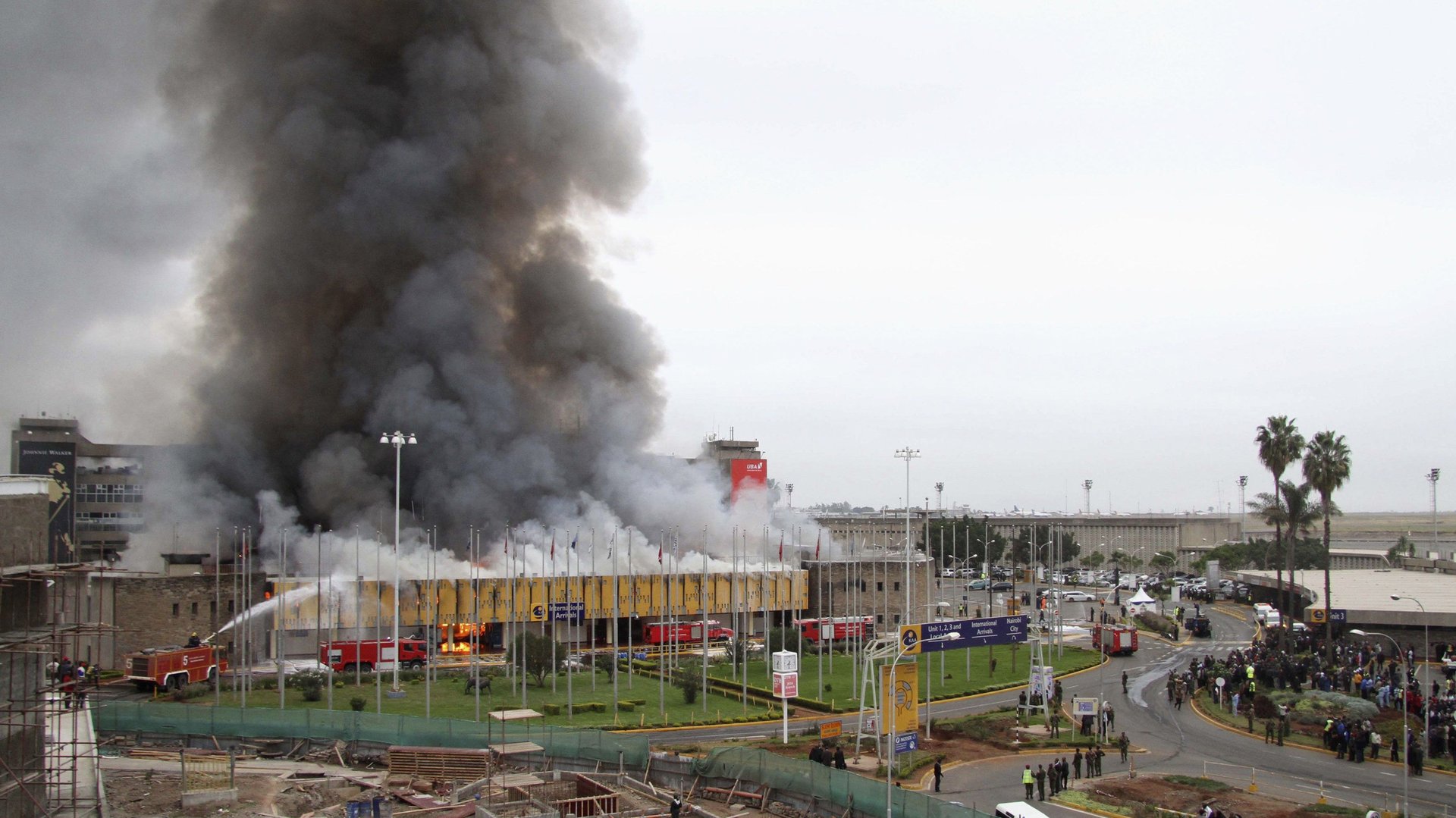What direct flights to the US would—and would not—do for Kenya
For Kenyans, one of the more exciting moments of US president Barack Obama’s visit last week was his brief, vague comment that direct flights between the US and Kenya might soon resume. American and Kenyan security officials had convened, he said, and “real progress has been made.”


For Kenyans, one of the more exciting moments of US president Barack Obama’s visit last week was his brief, vague comment that direct flights between the US and Kenya might soon resume. American and Kenyan security officials had convened, he said, and “real progress has been made.”
For an airport to act as a “last point of departure” to the US it has to meet certain security standards. Jomo Kenyatta International Airport (JKIA) has twice failed audits by the International Civil Aviation Organization, one in 2013 and one last April; it’s up for another audit in October. The reasons it failed aren’t public, but the presence of the al-Shabaab militia in Kenya isn’t necessarily one of them: In the past, US regulators have cited a failure to properly separate departing from arriving passengers, buildings lying in the flight path, and a lack of fencing around the airport. Recent upgrades were supposed to have addressed these issues, so it’s unclear why the airport again fell short.
But JKIA only has to improve its safety score slightly—from 78.42 at the last audit to a minimum of 80—to be classified as a “Category 1” airport by US regulators and get approval for direct flights. It first became an international airport in 1975; until recently much of the infrastructure still dated back to then. One of the terminals burned down in August 2013. “It’s a matter of modernization,” said Mike Macharia, the chief executive officer of the Kenyan Association of Hotel Keepers, who tracks this issue closely. “Once you modernize, you don’t have the security problems.”
The airport’s second-class status means travelers between Kenya and the US currently have to transit through places like London, Istanbul, Dubai, and Addis Ababa—an arduous, lengthy trip with multi-hour layovers. That’s not going to deter businessmen who have to make the trip—Nairobi became the economic hub of East Africa without the direct flights—but it is a major hurdle for optional travelers: tourists and the Kenyan diaspora in the US.
Direct flights would also be a boon to Kenya’s struggling national airline, Kenya Airways. It has lost business to airlines such as Ethiopian, which runs direct flights between Addis Ababa (only a two-hour flight from Nairobi) and Washington, DC. If direct US-Nairobi flights were restored, Kenya Airways would have a ready customer base in the 100,000-plus Kenyan community (pdf) in the US.
American airline Delta has also expressed interest. US authorities abruptly canceled its maiden flight from Atlanta to Nairobi in 2009 because of security concerns, and Delta has been pushing for the resumption ever since, as has FedEx.
Having direct flights would make doing business in Kenya easier, but wouldn’t be a game-changer, said Aly Khan Satchu, an investment analyst in Nairobi with a host of international clients. “US multinational companies preceded president Obama’s visit. They’re already here in a big way,” he said, ticking off some of the big names that have made Nairobi their East Africa base: General Electric, Dow Chemical, Google.
What it would change is tourism, Macharia said. His association is in the middle of a study on how much tourism numbers would be affected by the opening of direct flights, but he said that the numbers of Japanese, French, Korean, and German tourists dropped noticeably as each of those countries stopped their own direct flights.
Somewhere between 110,000 and 120,000 Americans came to Kenya in 2014, according to Macharia, despite the al-Shabaab attack on a Nairobi shopping mall the previous year. “That could easily double or triple with the direct flights,” he said.